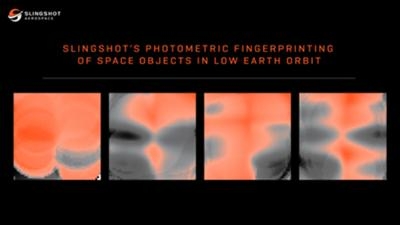Data/AI-Driven Solutions For Space Object Tracking, Coordination, And Modeling
Slingshot Aerospace, Inc., provider of AI-driven solutions for tracking satellites and other space objects as well as space domain modeling, announced its selection by AFWERX to support its Rapid Analysis of Photometric Tracks for space Object identification and behavior Recognition, or RAPTOR, program, under which the company will apply machine learning to track, analyze, and report on behavior of objects in low Earth orbit.

During the early stages of the project, RAPTOR will be use for tracking and maintaining custody – identity and location – of space objects of interest to the U.S. Space Command. Such information enables timely reporting of events that could indicate a mission change or maneuver of a satellite.
Tim Solms, CEO of Slingshot Aerospace said, "Protecting our national interests demands the utmost focus on maintaining dominance and situational awareness in the space domain. The Department of Defense must achieve comprehensive visibility and intelligence on covert and adversarial activities in space. RAPTOR delivers unparalleled awareness to safeguard critical assets, strengthen mission readiness, and uphold the security of our nation and its allies."
The Slingshot Global Sensor Network generates vast amounts of photometric data that are used to create digital signatures of space objects in LEO that Slingshot uses to identify, track, profile, and analyze. Such photometric fingerprints provide defense and intelligence agencies with a new tool set to unlock these capabilities:
- Tracking Objects of interest: Alert agencies of satellite orientation changes and examine fingerprints of newly-launched satellites to determine their type, mission, and whether further inspection is warranted.
- Maintaining Custody of objects: When a space object is lost unintentionally or via obfuscation by adversarial actors, Slingshot can reacquire custody of that object based on its fingerprint. It can also discern a specific object from among a group of objects.

- Detecting Objects: Slingshot can compare fingerprints of objects to detect anomalous behavior or when an object appears in a surprising location. Such info is compared against objects in its catalog to provide insights into the satellite type, capabilities, and mission.
Slingshot currently maintains a catalog of approximately 14,500 active spacecraft and debris objects through its global network of optical sensors. These sensors generate over 4.5 million photometric observations every night. The ‘light curves’ that result establish a unique digital fingerprint for each object that is fed into Slingshot’s Agatha AI model to identify changes in its orientation in space or its photometric signature.
 Airborne 06.30.25: US v ADS-B Misuse, Natl STOL Fire, Volocopter Resumes
Airborne 06.30.25: US v ADS-B Misuse, Natl STOL Fire, Volocopter Resumes NTSB Prelim: Piper PA-23
NTSB Prelim: Piper PA-23 ANN FAQ: Submit a News Story!
ANN FAQ: Submit a News Story! Classic Aero-TV: One Mans Vietnam
Classic Aero-TV: One Mans Vietnam Klyde Morris (06.30.25)
Klyde Morris (06.30.25)




